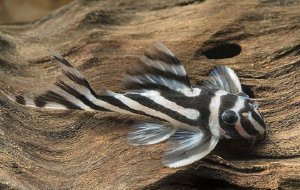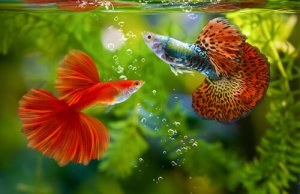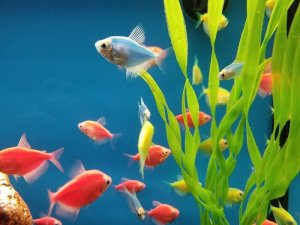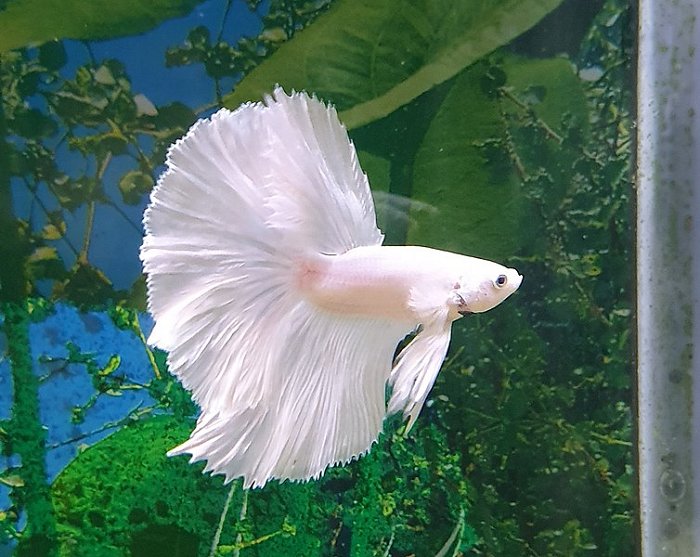
The White betta fish is an astonishing and unusual color variant for this species. Even though most Betta fish hobbyists or Aquarists prefer the more bright and bold-colored Betta Fish species, the White Opal Betta fish still holds a very elegant and almost angelic appeal.
Breed Overview
| Origin | Southeast Asia originated in Thailand |
| Lifespan | Three to Five years, but can live longer in rare cases |
| Size | Usually around 6–8 cm (2.4–3.1 in), rarely bigger than 3 inches |
| Colour | White and Albino |
| Food | Carnivorous |
| Tank Size | 9–19 liters (3–5 gallons) |
| Temperament | Aggressive, Territorial, Intelligent |
| Water Type | Freshwater |
| Water Temperature | 24–26 °C (75–78 °F) |
| Water pH | Neutral pH 7.0 or higher |
Species Information
The White Betta fish is an unusual but not very rare color variant of the Betta fish breed, or Siamese Fighter as many of us know them. The White Betta Fish, also known as the White Opal Betta fish will have a white body with finnage that may exhibit a more subtle pearlescent sheen. Sometimes they may appear slightly pink in color because you may be able to see the flex through the pale white scales of the fish.
The White Betta is a color variant from the Betta Splendens Species, a freshwater fish that is an extremely popular aquarium fish, however quite an aggressive fish. The Betta species is endemic to Thailand where it was domesticated and bred as a fighting fish for gambling purposes, it is native to Southeast Asia.
Male betta Fish are territorial however, they can be kept with other species of fish. Females need to be kept in groups of four or more fish when housed together.
White Betta Fish Color Variations
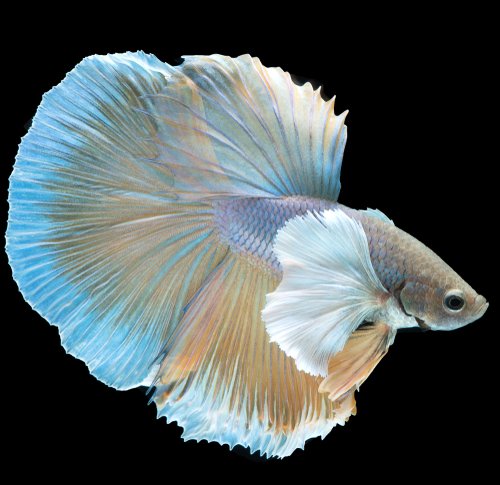
The betta fish has one of the most diverse color variations, and finnage variations. Some color variations may appear iridescent and seem like they are changing under different lighting conditions, or viewing angles.
The White Opal Betta Fish has a White or slightly pink body and almost pearl like, see-through finnage. Most White betta fish will be solid white with black eyes, though you also get Albino Betta fish that are more pinkish in color with pink eyes, but they are very rare.
White Betta Fish may have Different Finnage Variations such as;
- Veiltail – An extended Finnage length that has caudal fins with one split.
- CrownTail – Also Called ringtail is an extended Tail fin that looks almost frayed.
- Combtail – A less extended form of Crowntail.
- Moon Shaped Tails – these include a halfmoon D-shape, and the Over Halfmoon that is more extended.
- Rosetail – One of my personal favorites with overlapping finnage.
- Feathertail – Similar to the Rosetail with a more rough appearance.
- Plakat – Shorter fins usually found mostly in wild bettas.
- Delta Tail – Similar to a Half Moon with less tail spread.
- Elephant Ears – The Pectoral fins are larger than normal.
- Spade Tail – The Caudal fin resembles the shape of a spade.
Size
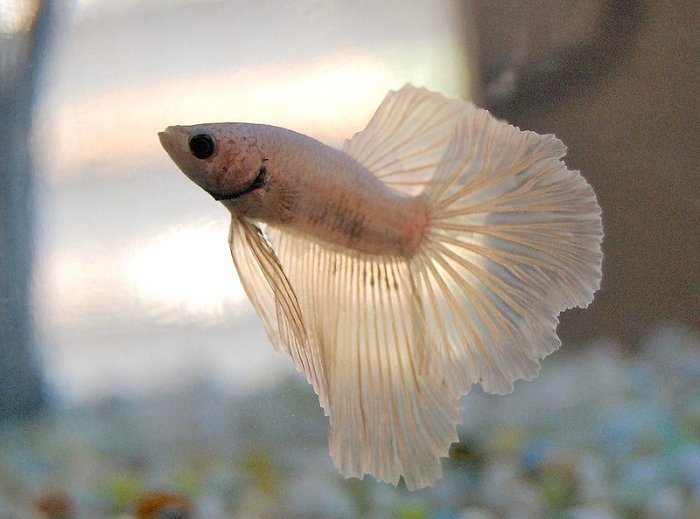
The White Betta Fish, similar to other betta fish species, will grow up to 6-8 cm (2.4 – 3.1 inches) in size. It is rare for Betta fish to grow much larger than 3 inches, however, there have been cases where they have grown slightly larger. Male and female Betta Fish are likewise similar in size, with the Male usually having much more exuberant finnage and better coloring.
Care In General
The White betta fish will be an astounding and beautiful addition to your tank, or new species to start with. I do however recommend the betta fish species for someone that is more advanced, and that has good knowledge of this breed. With the proper care and water conditions betta fish will easily thrive.
They are carnivores and need a protein based diet. Selecting tank mates and keeping them occupied are also two factors you need to consider. However, let’s go a little bit further into caring for your Betta Fish.
Tank Set Up
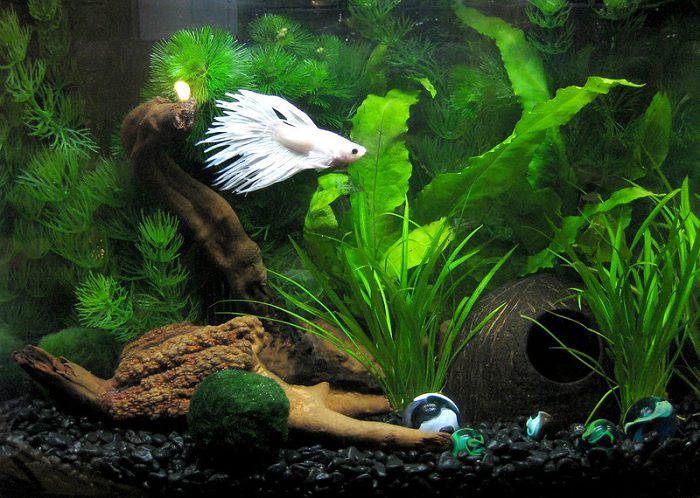
Betta fish in general are solitary and aggressive, especially the males, so if you are going to be keeping them with other fish species they will need enough space and hiding places in the tank.
You can not house betta fish males, or males and females together, though you can keep females together as long as they are in a group of four or more females, as they tend to have what we call a pecking order.
1. Tank Size
Contrary to what you may have seen in some pet stores, it is very cruel and unhealthy to keep betta fish in those small bowls with only water in them. These are temporary “showcases’ ‘ and not a home for them. Betta Fish need a tank size of at least 3-5 gallons, per fish. A larger tank will be needed for housing females, or introducing some tank mates.
2. Water Conditions
Betta fish are tropical freshwater fish that require water temperatures around 75–82 °F (24–28 °C), so for colder climates an aquarium heater may be required.
Betta fish can be affected by the water pH and require strict neutral Ph water of around 7.0 or more. They do need a well-maintained aquarium, they can essentially tolerate low oxygen levels.
Generally, betta fish enjoy still water and will require a mechanical filter that will not cause too much of a current that could affect their health and tire them out. Live aquatic plants similarly can provide good filtration, and oxygen levels, as well as much enrichment for your new White Betta fish.
3. Decorating Your Tank
Providing hiding places and good enrichment is essential for your White Betta fish. Betta fish are quite prone to get bored and depressed quickly, which could eventually affect their health. They are also territorial and will need a safe hiding space.
You will need the following in your betta Fish tank;
- Substrate – You need a base for the bottom of your fish tank that is safe and easy to maintain. As read in the Japanese Fighting Fish Organization Page, gravel and sand will be your best options. Marble should be avoided as you will need to move it around quite a bit for cleaning, because marble easily traps debris.
- Decor and Hiding Spaces – You can get tank decorations such as Caves, Driftwood, Shipwrecks, and many other interesting items for entertainment, and as a hiding spot. Though keep in mind to avoid anything with sharp edges or rough surfaces that could ultimately harm your fish.
- Plants – Plants are ideal for keeping your betta fish well entertained and are great hiding places, you can choose between synthetic or live plants. Live plants are ideally an excellent source of oxygen and will help to filter your tank. Betta fish love floating plants, and they are usually used when breeding for the males to build their bubble nests.
Tank Maintenance
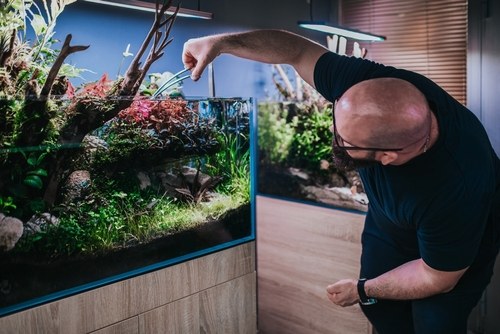
A dirty tank will easily cause your fish to become unhealthy, and unhappy, and can lead to some serious diseases. Though the Filter, plants, and some of your tank mates will be doing their part to keep the premises clean, you will still need to do weekly maintenance. You can follow these steps to maintain your tank weekly;
- Fill a separate container with water that is the same temperature as the water in your tank.
- Add your water conditioners to the water to remove all toxins.
- Remove water from your tank using suction from the bottom of the tank.
- Replace the water with the new conditioned water in the container.
- Do this weekly replacing at least 30% of the water in your tank.
Similarly, you will need to clean synthetic plants and ornaments, and remove dead plant matter. You can likewise invest in a good tank vacuum, which is something that has proven to be ideal for cleaning Fish Tanks.
Choosing A Healthy White Betta Fish
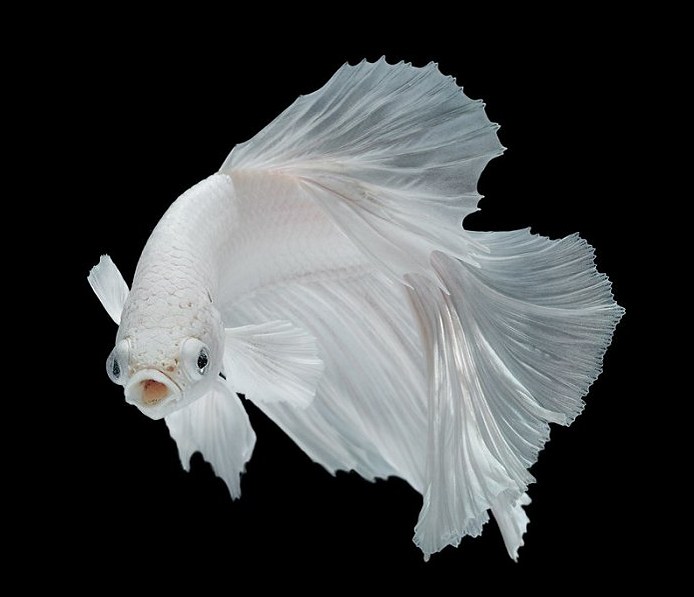
You may need to do some research to find a good pet store or breeder that has White betta fish available. When you have found one, make sure to look for these signs of health;
- Find – The fins should be free flowing and not clamped. They must not be torn, or damaged, or show any signs of discoloration or white spotting.
- Color – The Color will be solid White with Pearlescent finish, some White Betta fish may have a pinkish body.
- Eyes – White betta fish will generally have clear black eyes, whereas Albino species will have pink eyes.
- Gills – The Gills need to open and close easily and have no red marks around them.
- Body – The body needs to be smooth with no lumps or scales sticking out, or bloated belly.
- Size – I would suggest opting for a smaller Juvenile betta fish that is healthy and eating well.
Placing Your Betta Fish In The Tank
You need to consider that your new Betta fish may be slightly stressed from all the commotion, as well as when netted and handled their slime coat is rubbed off, so be careful when adding your fish to its new home. According to the “Pet Advocacy group” These are the best steps to add your new betta fish to it’s tank;
- Float the unopened bag with your fish in the new tank for at least 10 to 20 minutes to adjust them to the water temperature.
- Open the bag and remove some water, adding a cup at a time every 10 to 15 minutes of tank water to the bag for an hour.
- Release your fish into the tank, and try not to empty too much of the water from the bag as it may contain Ammonia from waste materials.
Selecting Tank Mates
Selecting tank mates can be quite tricky, especially with male Betta fish, but will also provide them with some much needed social interaction, and exercise, chasing smaller and faster species of fish around.
Now I have mentioned this before, but again, male betta fish can never be housed together, they will fight and kill each other. Males and females can only be together for a short period of time for breeding, but can never live together. Female Bettas can be housed together but in groups of four or more, they will shoal and have a hierarchy, whereas two females will try to establish dominance and one will end up killing the other.
The best other species of tank fish for Betta fish are tropical communal fish that are shallow, and that are not territorial. Choose fish with smaller fins and less attractive colors, otherwise they may be too inviting to your Betta fish.
On the other hand you also need to avoid predatory fish that may attack, or nip at your betta fish.
In the end your betta fish will have a personality of its own which will determine what types of, if any, tank mates may be accepted.
Here are a few fish species that have proven to be good tank mates for Betta fish in general;
- The Tetra – It is a peaceful fish that will shoal in larger groups.
- The Danio – Also a peaceful smaller fish that will shoal, try to avoid the brighter colors though.
- The Rasbora – A peaceful and energetic fish that your Betta will love to chase around, just ensure you get a group of them.
- Scavenger Fish – Any type of scavenger fish such as Loaches, Catfish, Corydoras, and Plecos will be a good tank mate, and help to keep your tank clean, as they are basically bottom dwellers.
- The Trumpet Snail – An excellent addition that will help to clean your tank.
Feeding
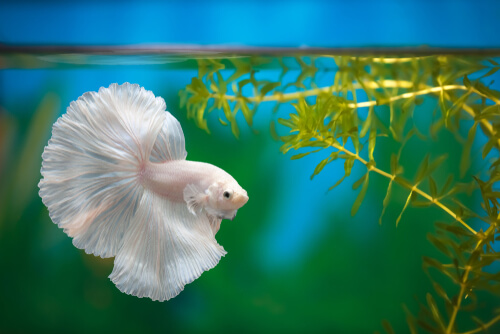
Betta fish in general are naturally Carnivores, in their natural habitat they feed on small crustaceans, zooplankton, insects larvae and other small insects that have fallen into the water, as well as algae.
It is advised to give your Betta fish a more varied diet consisting of high-quality pellets, Flakes, and Frozen or live foods. Live or frozen foods can include the following;
- Brine Shrimps
- Mosquito Larvae
- Small crustaceans
How Much And When To Feed
Betta fish do tend to overeat and they are quite eager eaters. However, overfeeding will lead to digestive problems, obesity, constipation and swim bladder disease. Leftover food may likewise pollute the water which could lead to other health issues.
With betta fish it is better to feed them once a day, and just enough for them to finish within 3-5 minutes, it is also recommended to remove any leftover food. There are some sources that claim that you should allow your Betta fish to fast for at least one day, to allow food to be fully processed, and it’s not uncommon for them to lose their appetite for a day or two. Did you know that the betta fish can survive without food for two weeks?
Temperament
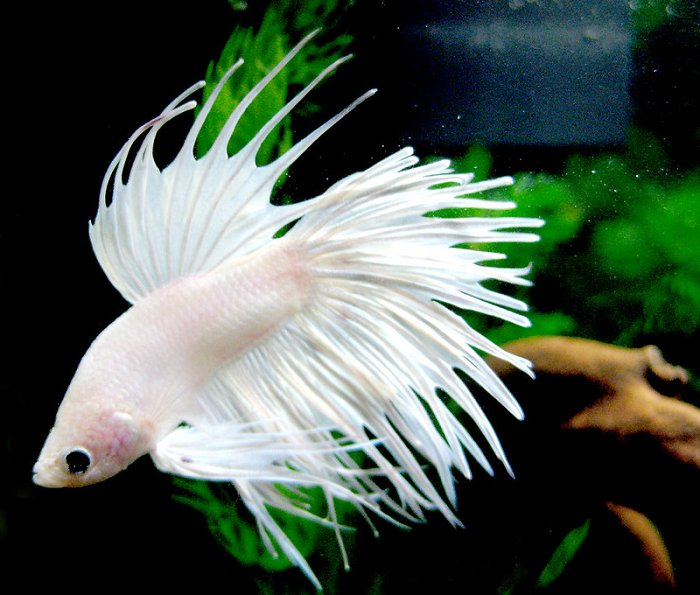
The “Siamese Fighter” fish, Betta Fish, can be quite aggressive and territorial. Generally they will be territorial over a certain item, such as a plant, decoration, or hiding place inside their tank. They are described as having “complex behavioral patterns and social interactions”.
As mentioned male Betta fish, and male and female Betta fish can never be housed together. Females create a hierarchy or Pecking order and should always be kept in groups.
Most Betta fish may get along with tank mates, though some individual fish may prefer to be alone. Betta fish are intelligent and capable of associative learning.
Common Health Issues
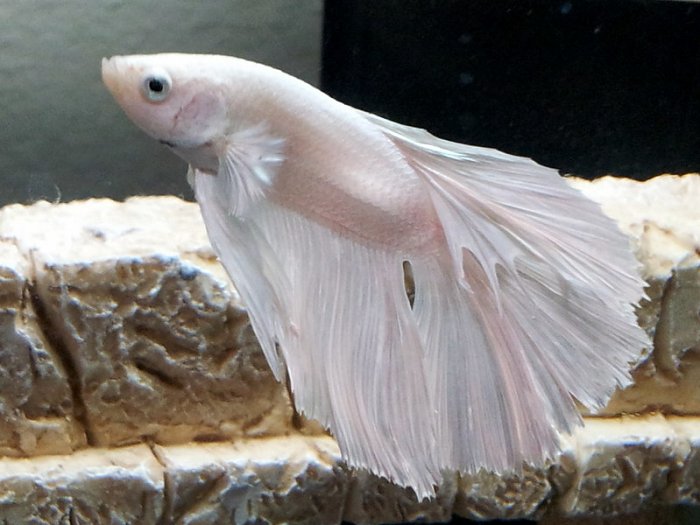
In the right living conditions and with a proper diet your Betta fish should not have any health issues, and can live between three and five years, and in more rare cases up to seven years in captivity.
Betta fish need a proper sized tank, good food, and some “exercise”. Exercise can be in the form of chasing other fish, or by chasing your Betta around with a small stick.
Though there are still a few health conditions that you should be aware of;
- Ich – Ich is a Parasite that will cause white spots on your Betta fish, and that can lead to a loss of color. To treat it you will need to isolate your fish, to a tank with a higher temperature. You can similarly get Ich medication from a petstore to add to the water.
- Velvet – Also referred to as Gold Dust or Rust disease is caused by a parasite that gives your fish a dusty gold brown color. Isolating your fish to a tank with a raised temperature, some salt and a Commercial Copper Treatment will help with this disease.
- Fin Rot – Fin Rot is a fungal, or bacterial infection, mainly caused by other fish nipping at the fins of your Betta which will affect the fins and spread to the body. You can get antibiotic treatment from a veterinarian for Fin Rot.
- Dropsy – When your Betta fish has a compromised immune system it may become bloated and have difficulty breathing. You may also notice that the scales start sticking out. Dropsy is not easily curable. You will need to place your White Betta in a separate tank, add 1 teaspoon of salt per gallon to the water and use antibiotics.
- Physical Damage – Betta fish may suffer physical damage from being handled, or from plants and decor in their tank that may have rough or sharp edges. Other fish in the tank may also nip at them. Any physical damage can be treated with an antibiotic, and the cause should be established and dealt with.
Betta Fish Turning White
There are some conditions in betta fish that can cause them to change color however, when your Betta fish is not naturally a White color and turns white, it could be a serious problem.
Ich is a skin infection caused by Parasites that can cause many white spots. Columnaris a bacterial infection may also cause certain parts of the body of your fish to have a fluffy white appearance. Betta Fish that have Anchor worms tend to appear white in color. You can read more about conditions causing color change in betta Fish in our trusted site Your Aquarium Place.
Other issues that can cause your Betta Fish to become white include;
- High Nitrite, Nitrate or Ammonia levels in the water.
- Stress caused by changes in their environment, or other factors that can cause white stripes.
- A poor diet that does not provide enough protein and nutrients.
Then again you may not have known this, but Marble colored Betta Fish rarely keep their colors, and are prone to turning white.
Breeding
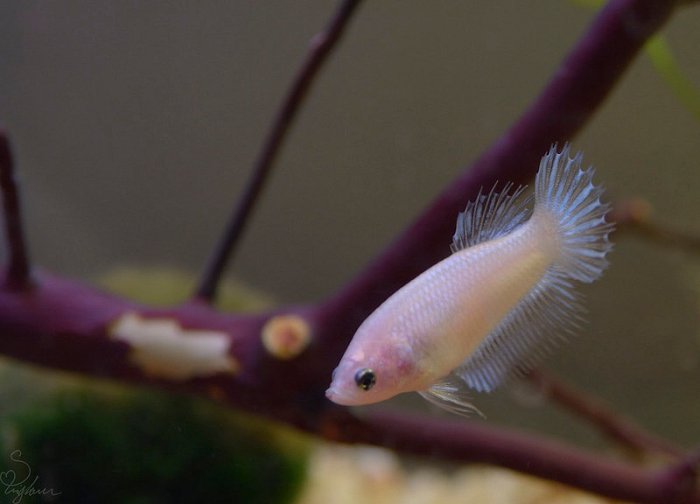
1. Mating
You will need to establish that your male and female betta fish are interested in each other first. The female can be added to a separate breeding tank, and the male placed in a divider inside the tank. Male betta’s will flare their gills and perform a dance spreading their fins if interested.
The female will darken in color and develop vertical lines or “breeding bars” as they are known.
At this stage you can release the male into the breeding tank, if there are no signs of aggression.
The Male will build a bubble nest at the surface of the tank, so ensure that there are plenty of surface plants, or almond leaves and the tank should contain no substrate or objects at the bottom. Upon accepting the bubble nest the male and female will mate.
2. Egg And Hatchling Care
After mating the female needs to be removed and the male takes care of the eggs and hatchlings. The eggs will hatch within two to three days, and the male will take care of the hatchlings until they become independent, and then he should be removed. You can feed the young fry baby brine shrimp to start off with. You will need to separate them at around two months of age to prevent fighting.
To Conclude
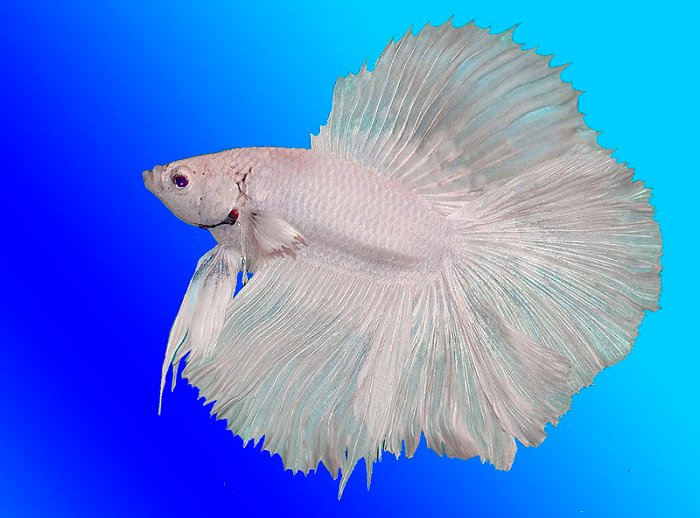
The White betta fish is a spectacular color variation of this exquisite and intelligent fish species. The White Opal betta fish, if taken care of properly will keep its white, opalescent color and will provide a few years of enjoyment and awe for you.
Betta fish in general get bored quickly, so place your betta in an area where you can provide plenty of interaction, you will be surprised how social and interactive they can be with their owners.


